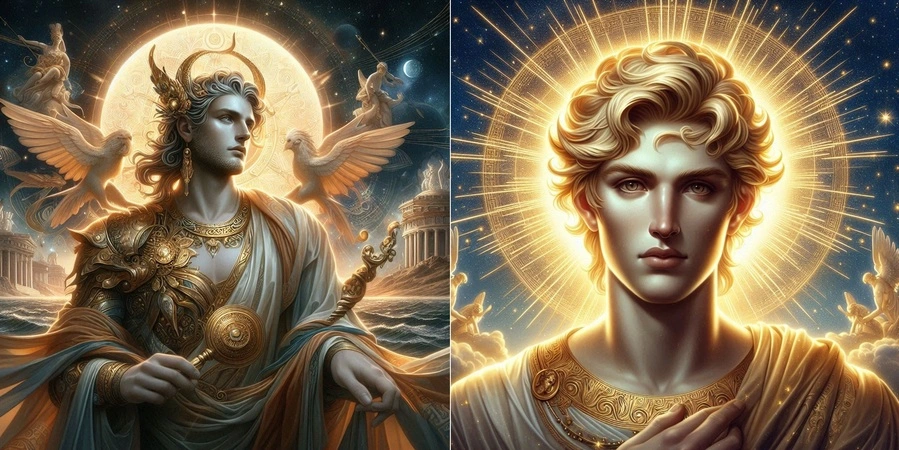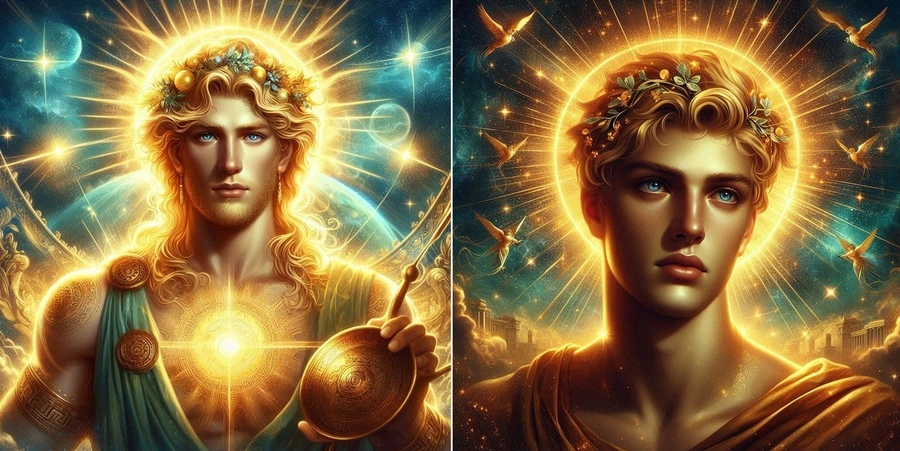
In Greek mythology, Eosphorus, also known as Phosphorus, was the god of the morning star, while Hesperus was the god of the evening star. He was the son of the goddess Eos, who was the personification of the dawn, and was often depicted as a young man with golden hair and a radiant aura.
The Story of Eosphorus
According to myth, Eosphorus was a messenger of the gods and was tasked with announcing the arrival of the sun each morning. He was also associated with the concept of renewal and rebirth, as his appearance in the morning sky represented the beginning of a new day and a new cycle of life.
Eosphorus had no known spouse or children in Greek mythology. However, his family was a powerful one, with his mother Eos being a major goddess in her own right. Eos was also known for her beauty and grace, and was often associated with the power of rejuvenation and renewal.
One of the most famous myths associated with Eosphorus is the story of his love for the mortal woman Cephalus. According to legend, Eosphorus fell in love with Cephalus and attempted to seduce her. However, Cephalus remained faithful to his wife and rejected Eosphorus’ advances. As a result, Eosphorus was filled with grief and transformed himself into the planet Venus, which was visible in the morning sky as a symbol of his unrequited love.
10 Myths and Facts About Eosphorus in Greek Mythology
Myth: Eosphorus was a god of the morning star. Fact: Eosphorus was associated with the planet Venus when it appeared in the morning sky, but was not considered a god in the same way as the Olympian deities.
Myth: Eosphorus had no spouse or children. Fact: While Eosphorus had no known spouse or children in Greek mythology, he was a member of a powerful family of deities, including his mother Eos and his siblings.
Myth: Eosphorus was a symbol of enlightenment and the pursuit of knowledge. Fact: Eosphorus was associated with the dawn and the beginning of a new day, but was not specifically linked to the pursuit of knowledge in Greek mythology.
Myth: Eosphorus was a minor figure in Greek mythology. Fact: While Eosphorus was not one of the major Olympian deities, he was still an important figure in Greek mythology and was associated with the power of renewal and rebirth.
Myth: Eosphorus was always depicted as a young man with golden hair. Fact: While Eosphorus was often depicted as a young man with golden hair, there were also depictions of him as an older and more mature figure.
Myth: Eosphorus was a god of love and desire. Fact: While Eosphorus was associated with the concept of love and desire, he was not specifically considered a god of these things in Greek mythology.
Myth: Eosphorus was a messenger of the gods. Fact: Eosphorus was associated with the power of communication and the exchange of ideas, but was not specifically considered a messenger of the gods in the same way as Hermes.
Myth: Eosphorus was only associated with the morning star. Fact: While Eosphorus was most closely associated with the morning star or the planet Venus in the morning sky, he was also associated with the concept of renewal and the power of nature.
Myth: Eosphorus was only mentioned in Greek mythology. Fact: Eosphorus was also mentioned in Roman mythology, where he was known as Lucifer.
Myth: Eosphorus had no known interactions with mortal humans. Fact: Eosphorus was known for his unrequited love for the mortal woman Cephalus, which has become a popular story in Greek mythology.
The Symbols of Eosphorus
One of the most significant symbols associated with Eosphorus was his connection to the dawn and the beginning of a new day. As the personification of the morning star, Eosphorus was seen as a symbol of hope and renewal, representing the power of each new day to bring new opportunities and possibilities.

Another symbol associated with Eosphorus was his connection to the power of communication and the exchange of ideas. As a messenger of the gods, Eosphorus was seen as a symbol of the importance of clear communication and the sharing of knowledge and information. His appearance in the morning sky represented the beginning of a new day and a new cycle of learning and discovery.
Eosphorus was also a symbol of the pursuit of enlightenment and the pursuit of higher knowledge. His radiant aura and golden hair were seen as a symbol of the power of knowledge to enlighten and uplift the human spirit.
Finally, Eosphorus was also associated with the power of love and desire. His unrequited love for the mortal woman Cephalus has become a popular story in Greek mythology, and his connection to the concept of love has endured as a symbol of the power of passion and desire to motivate and inspire people.
Eosphorus’ mythological narrative is intertwined with the cyclical rhythm of the cosmos. Each morning, as night gives way to day, Eosphorus emerges on the horizon, heralding the imminent arrival of the sun. This daily spectacle, known as the “dawn procession,” serves as a reminder of the eternal cycle of birth, death, and rebirth, mirroring the broader themes of life’s transient nature and the inevitability of change.
The Morning Star, or Venus as it is known astronomically, holds symbolic significance across cultures and civilizations. In Greek mythology, Eosphorus represents the divine aspect of Venus, the brightest object in the sky after the moon. As the Morning Star, Eosphorus symbolizes renewal, hope, and the eternal cycle of dawn, evoking feelings of awe and reverence for the natural world’s beauty and majesty.